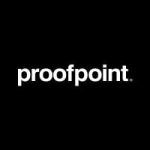
Head Of Information Technology at a government with 201-500 employees
Comprehensive protection ensures a seamless experience for IT management
Pros and Cons
- "I rate Microsoft Exchange Online Protection (EOP) nine out of ten."
What is our primary use case?
I am using Microsoft Exchange Online Protection (EOP) for word processing, spreadsheet management, Power BI, checking my meetings, using Teams, and for Exchange emails. I am utilizing all Microsoft products such as Word, Excel, and PowerPoint.
What is most valuable?
Microsoft Exchange Online Protection (EOP) has been valuable in providing its own antivirus, which in the last three years, has resulted in no antivirus problems.
What needs improvement?
I would like to improve the setting of rules in Microsoft Exchange Online Protection (EOP) as it is currently working fine but has room for enhancements.
For how long have I used the solution?
I have been using Microsoft Exchange Online Protection (EOP) for the past three years.
Buyer's Guide
Microsoft Exchange Online Protection (EOP)
September 2025
Learn what your peers think about Microsoft Exchange Online Protection (EOP). Get advice and tips from experienced pros sharing their opinions. Updated: September 2025.
868,787 professionals have used our research since 2012.
Which other solutions did I evaluate?
I conducted research on products like Zimbra, Google Workspace, and Microsoft Exchange.
What other advice do I have?
I rate Microsoft Exchange Online Protection (EOP) nine out of ten. As a government user and head of Information Technology at an organization, I gave the solution a minute, and it exceeded expectations, hence the high rating. If you have additional requirements, please email them for further discussions.
Which deployment model are you using for this solution?
Public Cloud
If public cloud, private cloud, or hybrid cloud, which cloud provider do you use?
Other
Disclosure: My company does not have a business relationship with this vendor other than being a customer.
Last updated: Apr 2, 2025
Flag as inappropriateDeputy Manager at B-Trac Technologies Ltd.
An effective email security solution that provides DLP, Safe Attachment, and Safe Links
Pros and Cons
- "Microsoft Exchange Online Protection has features like DLP (data loss protection), Safe Attachment, and Safe Links."
- "It would be helpful for customers if Plan 1 features were included with EOP."
What is most valuable?
Microsoft Exchange Online Protection has features like DLP (data loss protection), Safe Attachment, and Safe Links. Also, it has a Litigation Hold feature that is useful for email protection in cases where emails are deleted because of mishandling.
What needs improvement?
If you want extensive email security, you need to purchase a Plan 2 license. Plan 1 and Plan 2 are the two plans for Microsoft Exchange Online Protection. Some customers hesitate to purchase this product because it adds some costs to them, which is necessary for them. It would be helpful for customers if Plan 1 features were included with EOP. However, they still need to purchase Plan 2 for advanced security features.
One of our clients recently requested to compare Zimbra's features with Microsoft Exchange Online Protection. Zimbra is open source, while Microsoft Exchange Online Protection is not. When I compare both the products, many free features are available in Zimbra because it is open-source software.
It makes no sense to request Microsoft Exchange Online Protection add all the features people get on open-source software like Zimbra. Hence, I would say whatever features Microsoft Exchange Online Protection has are enough. Microsoft has a dedicated research team that should research and add new techniques like phishing and spamming solutions to the product.
For how long have I used the solution?
I have been using Microsoft Exchange Online Protection since January 2000. I work as a Microsoft distributor.
What do I think about the stability of the solution?
Microsoft Exchange Online Protection is a stable product. I have been working with it for the past four or five years, and it is one of the most effective and popular products in our country for email security. Since it has a yearly or monthly subscription, adding Plan 1 to EOP would be very helpful, increasing the product's popularity even more.
What do I think about the scalability of the solution?
As far as I know, and as far as I have worked with Microsoft Exchange Online Protection, its scalability is okay enough. I used this solution for small, medium, and large companies.
How are customer service and support?
Since our region is tied to the Indian region, the technical support is okay and supportive. However, it would be more helpful if support is enabled in our country.
Microsoft Exchange Online Protection manages too many sites from India, including Bangladesh, Sri Lanka, Nepal, and Bhutan. Sometimes they experience too many hiccups, except for severity-level cases. The technical support team responds according to the SLA, but sometimes they break it. A support center in Bangladesh would be very helpful for us.
I rate Microsoft Exchange Online Protection a seven or eight out of ten for its technical support.
How would you rate customer service and support?
Positive
How was the initial setup?
Microsoft Exchange Online Protection is much easier to deploy. We have faced issues with platform-to-platform migrations, such as Zimbra to Microsoft Exchange Online Protection, GoDaddy to Microsoft Exchange Online Protection, and Google G Suite to Microsoft Exchange Online Protection migrations.
In all of these cases, we have encountered challenges during migration. If we get migration support from Microsoft, we can increase our sales by 10 to 20%.
What's my experience with pricing, setup cost, and licensing?
Microsoft Exchange Online Protection's pricing is a little bit more because its price has recently increased. The product's price should be reduced by at least 10% because it's software, and they're just recovering their costs. If you sell 100 units with a profit of $5 for each unit, you make $500 in profits. However, if you reduce the profit to $3 for each unit and sell 1,000 units, you make a higher profit of $3000.
Even if they lose some revenue, their product reach will improve because there are many customers in Bangladesh. If Microsoft Exchange Online Protection reduces its price, its users will increase. The approximate licensing cost of Microsoft Exchange Online Protection varies depending on different packages.
What other advice do I have?
Microsoft Exchange Online Protection has lots of features. The solution offers a zero draft model, which is the most robust model for email security, identity protection, and endpoint security. According to the Gartner report, it's a good product. Microsoft Exchange Online Protection's product and client feedback is very good. The solution's price should be reduced, and Plan 1 features should be included with Exchange Online Protection.
Overall, I rate Microsoft Exchange Online Protection nine and a half out of ten.
Disclosure: My company has a business relationship with this vendor other than being a customer. Reseller
Buyer's Guide
Microsoft Exchange Online Protection (EOP)
September 2025
Learn what your peers think about Microsoft Exchange Online Protection (EOP). Get advice and tips from experienced pros sharing their opinions. Updated: September 2025.
868,787 professionals have used our research since 2012.
Senior Network Associate at AMCON, Inc.
Missing some crucial functionality for security, but otherwise is a great solution to start a business
What is our primary use case?
We use Microsoft Exchange Online Protection to secure our users' accounts. For example, we implement MFA on our users' emails to ensure their mailboxes or accounts are secured. Aside from providing the username and password, the solution provides a code or additional security to ensure their accounts are properly secured. We also used a phishing tool.
What needs improvement?
I want a seamless way of archiving users' emails on Exchange. When a user's emails are archived on the system, we find out their mailbox is large the moment we need to copy those files back. Another issue is with OneDrive, in that if a user has files stored on OneDrive when they exit, the license is removed. As a result, transferring those files to another user is a problem. It should be possible for there to be a central location where each of those files is stored. That way, even after a user leaves and the license is removed, we don't lose access to that information after 90 days.
The solution should protect mailboxes. Most of our users have emails on their mobile, so if a staff member exits from the corporation, we need something that mimics email on the mobile. Some tools delete all of a user's emails and passwords the moment they leave that environment or their employer, but I don't think Microsoft has any such tools. It's important because passwords and sensitive information could pass into the wrong people's hands.
For how long have I used the solution?
I've used the solution for the last two or three years now.
What do I think about the stability of the solution?
The solution is very stable.
What do I think about the scalability of the solution?
The solution is very scalable. There are between 350 to 400 users using the solution. There are plans to increase the usage.
Which solution did I use previously and why did I switch?
We used to use Google Mail before migrating to Exchange.
How was the initial setup?
It is straightforward to deploy the solution. It takes three hours or so to deploy it. We have five people managing the solution.
What's my experience with pricing, setup cost, and licensing?
We pay licensing fees yearly.
What other advice do I have?
Earlier, we had Microsoft Exchange on-prem and then moved to 365.
I recommend the solution to other users because it is easy to start a business. I rate it a five out of ten.
Disclosure: My company does not have a business relationship with this vendor other than being a customer.
0 at a tech vendor with 5,001-10,000 employees
Offers valuable alert features
Pros and Cons
- "The threat management feature includes policies and alerts that are valuable."
- "Performance and speed should continue to be improved."
What is our primary use case?
Our company uses the solution to provide customers with threat management. We group emails or policies from DLP, configure them, and resolve alerts.
Customers have multiple teams who are responsible for managing the solution's features. For example, a customer might have security and DevOps teams with an engineering team just to manage email. Across all management teams, there might be up to fifty users. Companywide, the solution is used by every employee because it is associated with email.
What is most valuable?
The threat management feature includes policies and alerts that are valuable.
What needs improvement?
The solution is expensive.
Performance and speed should continue to be improved. Microsoft is in a state of constant modifications to ensure their engines always perform. They have the budget and longevity to to know what they need to continue doing without outside advice.
For how long have I used the solution?
I have been using the solution for three years.
What do I think about the stability of the solution?
The solution is stable with no issues.
What do I think about the scalability of the solution?
The solution is scalable to any customer needs. Internally, we don't have plans to scale.
How are customer service and support?
I contacted technical support for issues with Azure permissions. I wanted to understand the readable permissions required to see entire subscriptions if you are not an organization's domain administrator. They reached out to me pretty quickly, their approach was okay, and they resolved my issue.
I rate support a ten out of ten.
How would you rate customer service and support?
Positive
How was the initial setup?
The setup is straightforward.
What about the implementation team?
We implement the solution for customers.
What's my experience with pricing, setup cost, and licensing?
The solution is expensive but is backed by Microsoft's reputation.
Some companies have difficulty with billing because they are surprised by ongoing costs. For example, you might purchase a package but then realize you need other things. Microsoft might alert you of security issues but when you try to reconfigure, you find that you have to pay for the feature. If you already have an agreement for $500,000 it is difficult to add $500,000 to do things the best way.
The cloud version is more expensive than on-premises but it resolves any scalability issues. The cloud's purpose is to always be available without any work.
Which other solutions did I evaluate?
Microsoft delivers the whole package in one solution. It manages servers, domain controls, security, firewalls, WAF, EDR, antiviruses, proxies, and email. In the future, there will be firewalls for email.
I use Proofpoint as a security solution on top of Microsoft. From a security and IT perspective, it is always good to have multiple vendors. An entire environment with Microsoft solutions might have a gap.
What other advice do I have?
In my experience, everyone is using Azure or solutions from Microsoft. Word, Excel, and Outlook are present for a majority of companies. There is very little on the Google platform for email.
The solution's discussion is more about budget and whether you are going to choose the on-premises or the cloud version.
Microsoft is huge and a top-three vendor that really only competes with AWS and maybe Oracle. Certain features like scalability really are not relevant because the company's reputation is more than enough. Age in the market and investments in security are more important. You can rest assured that Microsoft has a particular team dedicated to each feature or issue. They are always improving and always delivering.
Certain features of the solution will be valuable based on your role. For example, I am part of the security team so threat management is interesting to me. An an engineer or email team might be more interested in policies, configuration, or the administrative exchange.
Nothing is perfect but the solution is very good. When you don't have opponents, it is easier to achieve a good rating. I rate the solution a nine out of ten.
Which deployment model are you using for this solution?
Hybrid Cloud
If public cloud, private cloud, or hybrid cloud, which cloud provider do you use?
Other
Disclosure: My company does not have a business relationship with this vendor other than being a customer.
Director at a tech services company with 11-50 employees
Has significantly reduced phishing and spam while providing a smooth setup experience
What is our primary use case?
My use case for Microsoft Exchange Online Protection (EOP) is basically to protect ourselves from phishing emails and to improve our email security.
What is most valuable?
The best features of Microsoft Exchange Online Protection (EOP) include its reliability with removing spam and its impressive automatic filtering.
We've benefited from the anti-phishing features of Microsoft Exchange Online Protection (EOP), as it has been quite accurate and has eliminated most of our phishing emails, making it really impressive.
What needs improvement?
The user interface of Microsoft Exchange Online Protection (EOP) has room for improvement, as at times it doesn't make sense where to go to access certain features.
For how long have I used the solution?
I've been working with Microsoft Exchange Online Protection (EOP) for over a year now.
What do I think about the stability of the solution?
I consider Microsoft Exchange Online Protection (EOP) to be a stable solution.
What do I think about the scalability of the solution?
Microsoft Exchange Online Protection (EOP) is a scalable solution.
How are customer service and support?
I would rate technical support from Microsoft for Microsoft Exchange Online Protection (EOP) a seven on a scale from one to ten.
How would you rate customer service and support?
Positive
How was the initial setup?
The initial setup of Microsoft Exchange Online Protection (EOP) was quite straightforward, which is one of the positives of the tool.
What about the implementation team?
We managed our deployment of Microsoft Exchange Online Protection (EOP) ourselves, without using a third party such as an integrator or consultant.
What's my experience with pricing, setup cost, and licensing?
I find the price of Microsoft Exchange Online Protection (EOP) to be fairly reasonable, and I have no problems with it.
What other advice do I have?
My advice for people looking into using Microsoft Exchange Online Protection (EOP) is that if you're just starting out, the Microsoft documentation is often quite helpful, and if you read that, then you have no need to contact support. I rate Microsoft Exchange Online Protection (EOP) nine out of ten.
Which deployment model are you using for this solution?
Hybrid Cloud
Disclosure: My company has a business relationship with this vendor other than being a customer. Partner
Last updated: Sep 12, 2025
Flag as inappropriateM365 / Azure Information Security Officer at a retailer with 10,001+ employees
Provides incident alerts to detect malware attached to mailers
Pros and Cons
- "With Microsoft Exchange Online Protection, if malware is attached to a mailer, it's very easy to go into the incident alert and find out what's happening with that identity and the mail."
- "If a company wants to put in line back-to-back anti-spam solutions, they need to work on that part because Microsoft recommends either you use EOP as a front line or you don't use it."
What is our primary use case?
We are using Microsoft Exchange Online Protection for all our customers. Microsoft doesn't give you a preconfigured solution like other vendors. Microsoft has come out of that plug-and-play concept, and for every product, you need to reconfigure and fine-tune it according to your needs.
What is most valuable?
With Microsoft Exchange Online Protection, if malware is attached to a mailer, it's very easy to go into the incident alert and find out what's happening with that identity and the mail.
What needs improvement?
If a company wants to put in line back-to-back anti-spam solutions, they need to work on that part because Microsoft recommends either you use EOP as a front line or you don't use it. Microsoft Exchange Online Protection needs to work on this shortcoming.
Microsoft needs to redo its pricing regarding Microsoft Exchange Online Protection because every customer who buys Microsoft 365 needs Microsoft Exchange Online Protection.
For how long have I used the solution?
I have been using Microsoft Exchange Online Protection for around four to five years.
What do I think about the stability of the solution?
I rate Microsoft Exchange Online Protection ten out of ten for stability.
What do I think about the scalability of the solution?
I rate Microsoft Exchange Online Protection an eight out of ten for scalability. Around 70,000 users use Microsoft Exchange Online Protection in our organization.
How are customer service and support?
Microsoft's technical support is much better than other vendors. However, Microsoft engineers need to be guided. For example, if I tell Microsoft's EOL team about a certificate issue, I need to let them know about the issue and the article I'm talking about, and then they will fix it for me.
How was the initial setup?
Since I come from an Exchange background, Microsoft Exchange Online Protection's initial setup is simple.
What other advice do I have?
At times, when we are doing URL whitelisting, we raise it to the support, and Microsoft removes one feature of whitelisting.
Overall, I rate Microsoft Exchange Online Protection a nine out of ten.
Disclosure: My company does not have a business relationship with this vendor other than being a customer.
Self Employed, Freelance, Consultor, Sales - Learning Time at SpectralByte
It provides the same protection regardless of whether users are in the office
Pros and Cons
- "The solution uses artificial intelligence and machine learning, so you don't need train it to detect something. The detection and response times are short. It's an excellent product."
- "I would like to get reports about vulnerable connections from our clients with information about domains, public IPs, etc. That would be highly useful."
What is our primary use case?
Microsoft Exchange Online Protection protects remote and on-site users against email-based threats.
How has it helped my organization?
Microsoft Exchange Online Protection guards against threats regardless of whether our users are in the office. If you receive an email with a malicious link, the solution will warn you against opening it.
What is most valuable?
The solution uses artificial intelligence and machine learning, so you don't need train it to detect something. The detection and response times are short. It's an excellent product.
What needs improvement?
Microsoft should publicize the solution more because it isn't well known. I appreciate the solution because it does a lot of things that I used to do manually. I didn't realize something like this existed. I went to Symantec, Trend Micro, and other providers, but Microsoft had the only solution to my problems.
I would like to get reports about vulnerable connections from our clients with information about domains, public IPs, etc. That would be highly useful.
For how long have I used the solution?
I have used Microsoft Exchange Online Protection for two years.
What do I think about the stability of the solution?
I rate Microsoft Exchange Online Protection nine out of 10 for stability.
What do I think about the scalability of the solution?
I rate Microsoft Exchange Online Protection 10 out of 10 for scalability.
How are customer service and support?
I rate Microsoft support eight out of 10.
How would you rate customer service and support?
Positive
How was the initial setup?
Microsoft Exchange Online Protection is easy to set up.
What was our ROI?
We have seen a return on our investment.
What's my experience with pricing, setup cost, and licensing?
The solution is fairly priced.
What other advice do I have?
I rate Microsoft Exchange Online Protection nine out of 10.
Disclosure: My company does not have a business relationship with this vendor other than being a customer.
Senior Infrastructure Engineer at Net Consulting
A main communication tool that helps to use and update tickets
Pros and Cons
- "We use the solution in all our environments. We use it for remedy tickets and give them updates. It was our main communication point."
- "The solution can be complex at times. It would be nice to have the on-server version. It needs to improve the stability as well."
What is our primary use case?
We use the solution in all our environments. We use it for remedy tickets and give them updates. It was our main communication point.
What needs improvement?
The solution can be complex at times. It would be nice to have the on-server version. It needs to improve the stability as well.
For how long have I used the solution?
I have been working with the product for seven years.
What do I think about the scalability of the solution?
The tool is scalable and it helps us to add/remove new users, servers, clusters, etc.
How was the initial setup?
The solution's setup is complex and it took us months to complete the deployment.
What about the implementation team?
We did the product's deployment in-house.
What was our ROI?
We have seen an ROI with the tool's use.
What's my experience with pricing, setup cost, and licensing?
The solution's pricing is subscription-based rather than a yearly licensing cost. Pricing is based on the size of the environment and company and can be expensive.
What other advice do I have?
I would rate the product a seven out of ten.
Disclosure: My company does not have a business relationship with this vendor other than being a customer.
Buyer's Guide
Download our free Microsoft Exchange Online Protection (EOP) Report and get advice and tips from experienced pros
sharing their opinions.
Updated: September 2025
Popular Comparisons
Microsoft Defender for Endpoint
Microsoft Defender for Office 365
Proofpoint Email Protection
Check Point Harmony Endpoint
Cisco Secure Email
Abnormal Security
Check Point Harmony Email & Collaboration
Fortinet FortiMail
Check Point Harmony SASE (formerly Perimeter 81)
Trend Micro Email Security
Buyer's Guide
Download our free Microsoft Exchange Online Protection (EOP) Report and get advice and tips from experienced pros
sharing their opinions.
Quick Links
Learn More: Questions:
- What are the threats associated with using ‘bogus’ cybersecurity tools?
- What to choose: an endpoint antivirus, an EDR solution or both?
- Do we need to use both EDR and Antivirus (AV) solutions for better protection of IT assets?
- Looking for alternatives to Symantec Cloud Protection Engine
- Who provides a better antivirus solution: Bitdefender or Sophos?
- Which antivirus is best for isolated work PCs?
- How do you identify malware?
- Why are Anti-Malware Tools important for companies?
- When evaluating Anti-Malware Tools, what aspect do you think is the most important to look for?
- When evaluating Antimalware Tools, what aspect do you think is the most important to look for?

















